The bright red fillets of sockeye were lined up side by side like a stand of vivid spring flowers. They proclaimed the return of the wild salmon season in Alaska. Their striking color and slender shape were unmistakable, markedly different from the farmed Atlantic salmon available year round.
Alaska salmon comes from one of our few still-viable wild fisheries. Other populations, like Atlantic cod, a foundation of European and Early American life, have collapsed. Much of the fish available today — tilapia, Atlantic salmon, branzino as well as shrimp — is farmed. Wild fish with a diverse diet and a life at sea are leaner, more flavorful, and all natural.
In Alaska, the living resources from the ocean are carefully managed to insure continued sustainable harvests, top quality, and traditional livelihoods for both residents and native populations.
The wild salmon season runs from mid-May through the summer and into the fall. Over this time span, multiple species make their journey from the clean, cold waters of the open Pacific to the pristine Alaska spawning grounds.
Highly-prized king salmon have a short, roughly month-long run that kicks off the season. With high oil content and rich texture, the most renowned of these regally-sized fish come from the Copper River region southeast of Anchorage. The kings should be arriving by air freight to the east coast any day now. These desirable fillets can easily command prices north of $30 a pound.
 Alan Pagano of Pagano’s Seafood in Norwalk told me that he’s hoping to see the kings soon. With reduced flight schedules due to the pandemic, supplies may be short, but he’ll get what he can.
Alan Pagano of Pagano’s Seafood in Norwalk told me that he’s hoping to see the kings soon. With reduced flight schedules due to the pandemic, supplies may be short, but he’ll get what he can.
Early in his seafood career, Pagano spent a couple years in the Alaska salmon trade. He knows the ins and outs of the business and the sources for the best fish. Stop into his retail store at 142 Water Street to see what’s available throughout the season. 14
The prolific sockeye run comes next. Recognized by their bright red color, firm meat, and good flavor, they’re popular with chefs and home cooks. Later in June the coho run begins. Larger with an orange-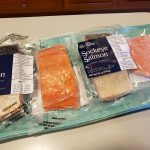 red color, cohos are great on the grill.
red color, cohos are great on the grill.
Wild salmon is a popular item at the Stew Leonard’s fish counter. Doug Goodman, Norwalk seafood manager and seafood buyer, agreed that king salmon is the most sought after. “Also known as chinook, these salmon are prized for their color, high oil content, firm texture and deep orange color.” he said. “Coho is the second most popular, with lighter color and more delicate flavor than king salmon.”
Alaska is a long way from here — roughly 3300 miles from New York as the gull flies — so it’s a costly business to fly in fresh salmon. When it does arrive by air, it’s a seasonal luxury item, prized for its freshness.
A good portion of the remaining salmon catch is frozen to preserve quality on the journey to the lower 48. Fishermen in Alaska are up on the latest freezing techniques and storage methods. Properly frozen right off the boat, the fish, when thawed, is a good deal fresher even than fresh fish that flies first class.
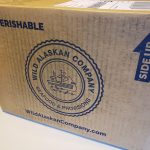 Marsha signed up for a monthly box of Alaska salmon at wildalaskancompany.com/. We started off with a dozen portions across a range of varieties delivered to our door. Flash-frozen and shipped FedEx in dry ice, it’s pretty close to right off the boat.
Marsha signed up for a monthly box of Alaska salmon at wildalaskancompany.com/. We started off with a dozen portions across a range of varieties delivered to our door. Flash-frozen and shipped FedEx in dry ice, it’s pretty close to right off the boat.
Based in Bristol Bay northeast of Anchorage looking out toward the Bering Sea, Wild Alaskan Seafood is headed by Arron Kallenberg, a third generation Alaska fisherman. His passion is to bring sustainably-harvested, wild-caught seafood to American tables.
Our insulated box arrived with a chunk of dry ice and a dozen salmon portions — four coho and eight sockeye — individually wrapped. The color difference was immediately apparent. The instructions 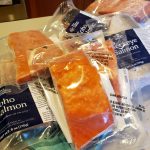 suggest unwrapping the portions ten hours in advance to thaw in the refrigerator. Sauté, grill, roast, or bake — any salmon recipe will work with these.
suggest unwrapping the portions ten hours in advance to thaw in the refrigerator. Sauté, grill, roast, or bake — any salmon recipe will work with these.
I like to top the fish with halved cherry tomatoes seasoned with lemon zest, capers, olive oil, and salt and then bake at 400°. The tomatoes add color and a complex sweet acidity as they caramelize.
Like the rest of us, the Alaska salmon fishery is struggling with the pandemic. In a typical year 60,000 seasonal workers come to crew the boats and process the fish. Alaskans are debating how to keep these workers safe and isolated from local and native populations. In small port towns only accessible by plane or boat, the problems are particularly acute.
This year’s harvest is forecast to be lower than the bumper crop in 2019. Still, there should be plenty of wild salmon to go around. Last year more than 872 million pounds were landed. Whether you buy at your local seafood counter or order a regular delivery, wild Alaska salmon is a healthy and sustainable treat.
Frank Whitman can be reached at NotBreadAloneFW@gmail.com







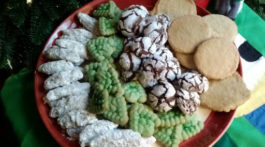
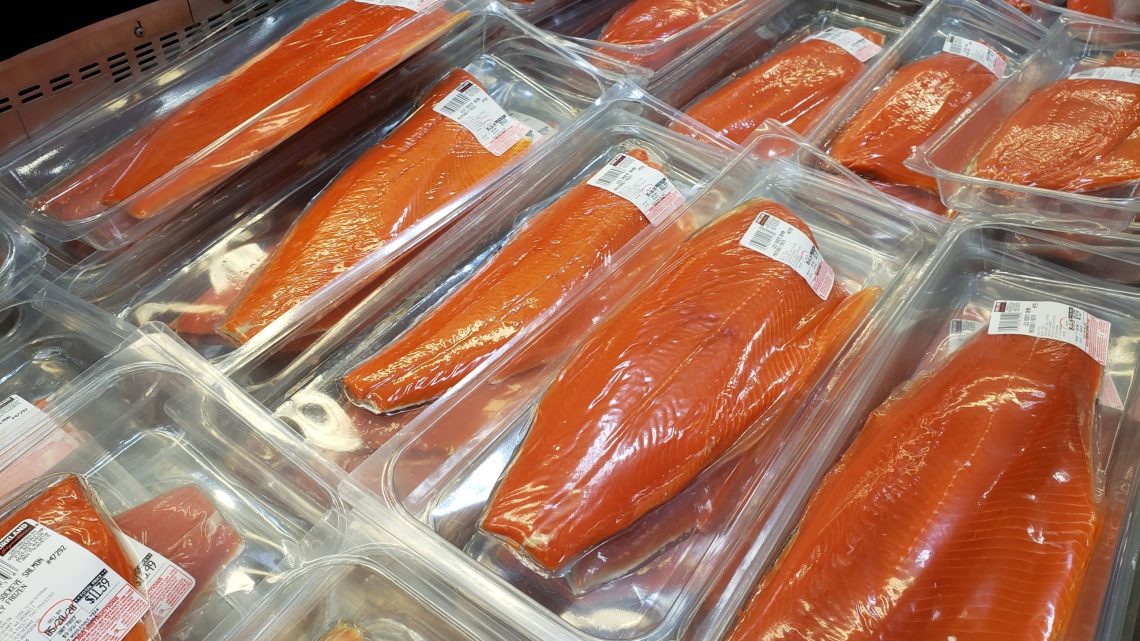

Wow, my mouth is watering. I do love salmon and appreciate your tutorial. The fishermen, the preparers and shippers have to get through this pandemic like all of us. I wish them well.